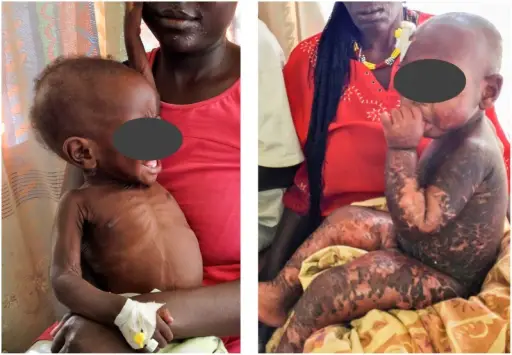Marasmus is a form of severe malnutrition characterized by energy deficiency.
What is the Pathology of Marasmus?
The pathology of marasmus is:
-Etiology: Causes of marasmus include maternal malnutrition, maternal anemia, poverty, and pathological condition in the newborn such as diarrhea.
-Genes involved: None.
-Pathogenesis: The sequence of events that lead to marasmus always includes a negative energy balance.
-Morphology: The morphology associated with marasmus shows growth retardation (in weight more than in height) and progressive wasting of subcutaneous fat and muscle.
How does Marasmus Present?
Patients with marasmus are typically children. The symptoms, features, and clinical findings associated with marasmus include unusual body temperature, anemia, dehydration, hypovolemic shock, decreased consciousness, abdominal manifestations, large or small liver, blood or mucus in the stools, ocular manifestations, dermal manifestations, dry skin, and brittle hairs.
How is Marasmus Diagnosed?
Marasmus is diagnosed by doing a physical examination.
How is Marasmus Treated?
Marasmus is treated with resuscitation (rehydration), stabilization, nutritional rehabilitation and follow-up.
What is the Prognosis of Marasmus?
The prognosis of marasmus is poor, if left untreated, it can lead to death.



